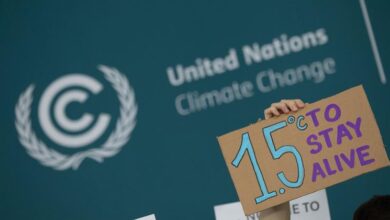Middle East Crisis: Violence Rises Significantly in Gaza, Israel and Lebanon


The development comes as senior UN official in Lebanon Jeanine Hennis-Plasschaert begins an official visit to Israel to meet with senior government officials, following persistent that thing “There is no military solution that can make both sides safer.”.
In Lebanon, residents in the south reportedly received phone and social media messages from the Israeli military on Monday, telling them to stay away from any buildings or villages linked to the militant group Hezbollah.
The militant group is believed to have fired around 150 rockets into northern Israel over the weekend, the latest in a series of Hezbollah attacks that began shortly after the war in Gaza broke out, and have so far displaced around 60,000 Israelis. In southern Lebanon, around 30,000 people have been forced to flee their homes.
Amid repeated calls from the international community to de-escalate tensions in the region, Security Council held an emergency session last Friday.following deadly Israeli airstrikes on the Lebanese capital Beirut and further south.
The meeting comes at the end of a week of increased cross-border fighting between Hezbollah and Israeli forces two days after a deadly wireless device explosion targeted the militant group.
Rain adds to humanitarian crisis
Meanwhile, in central Gaza, shelters were destroyed in air strikes on the refugee camp around Nuseirat, according to the UN agency for Palestinian refugees. UNRWAwhile media reports also pointed to increased Israeli military activity.
The UN agency also reported that heavy rains and high tides have overwhelmed temporary shelters along the coast, where the Israeli military has ordered residents of the enclave to evacuate, through multiple evacuation orders. Since Hamas launched terror attacks on multiple targets in Israel on October 7, 1.9 million Gazans, or 90 percent of the population, have been displaced.
Local authorities have urged people in low-lying areas to leave and seek higher ground, while aid groups and UN partners reported that they do not have access or security to allow them to bring in enough shelter materials to help all those affected by the rain.
In addition to the ongoing deadly threat from the war, UNRWA warns that people taking refuge in open spaces in Gaza face serious health risks because there are no sewage networks or stormwater drainage systems in place.
The UN agency noted that reptiles, rodents and insects pose an increasing threat of disease and agency teams have begun spraying pesticides and cleaning up waste to protect families from falling ill.
Power outage
Meanwhile, in northern Gaza, UN humanitarian agencies say the lack of clean water remains a serious concern.
Water, sanitation and hygiene facilities powered by fuel-powered generators transported into the area have had to “drastically reduce” their operating hours to avoid complete closure, the UN aid coordination office said. OCHA, speak.
“Humanitarian partners working to respond say getting fuel to the north remains extremely difficultwith deliveries frequently delayed or rejected at checkpoints by Israeli authorities,” the report noted.
In addition to persistent aid access problems, Gaza’s current water crisis is made worse by damaged water infrastructure, a lack of safety that prevents repairs, and a lack of spare parts and chlorine.
To help address the emergency, the United Nations Children’s Fund (UNICEF) said it provides 15 liters of water per person per day to nearly 900,000 people, ensuring that part of their water needs are met for three months.
Since October, UNICEF has provided water to more than 1.7 million people in Khan Younis, Rafah and central Gaza, distributing 4.75 million liters of bottled water.
The UN agency has also supported local authorities with more than 3.4 million liters of fuel and more than 40 cubic meters of water treatment chemicals to help partially restore water production and distribution from seawater desalination plants.
Four mobile water treatment plants in Khan Younis and Rafah are also supported by UNICEF, each capable of producing five cubic metres of water per hour. Tankers then distribute clean water to displaced Palestinians near their shelters, as fuel for the trucks is hard to come by and children often have to walk long distances to fetch water for their families.




